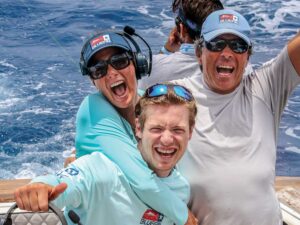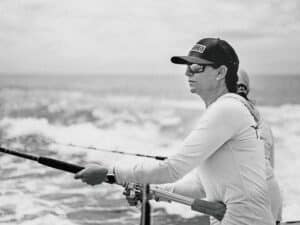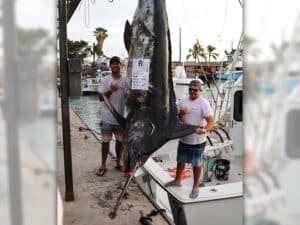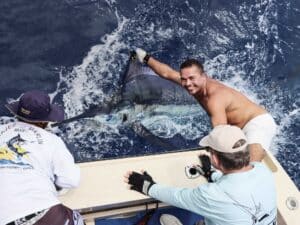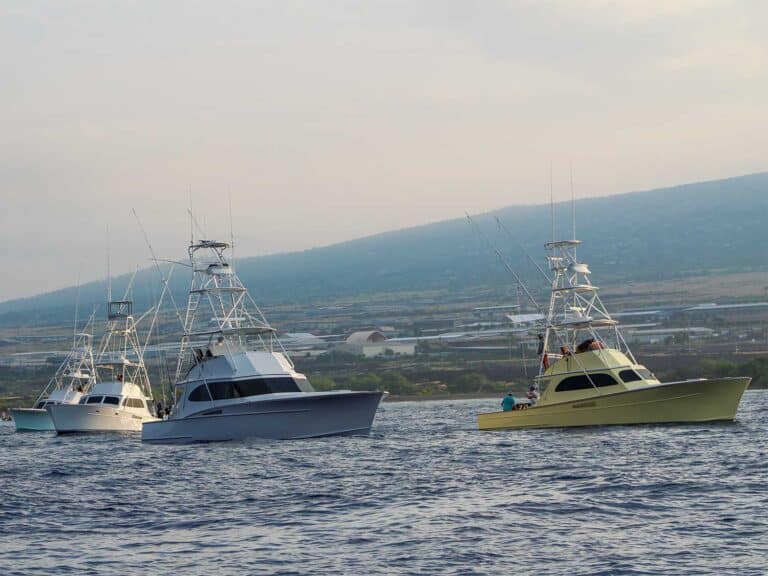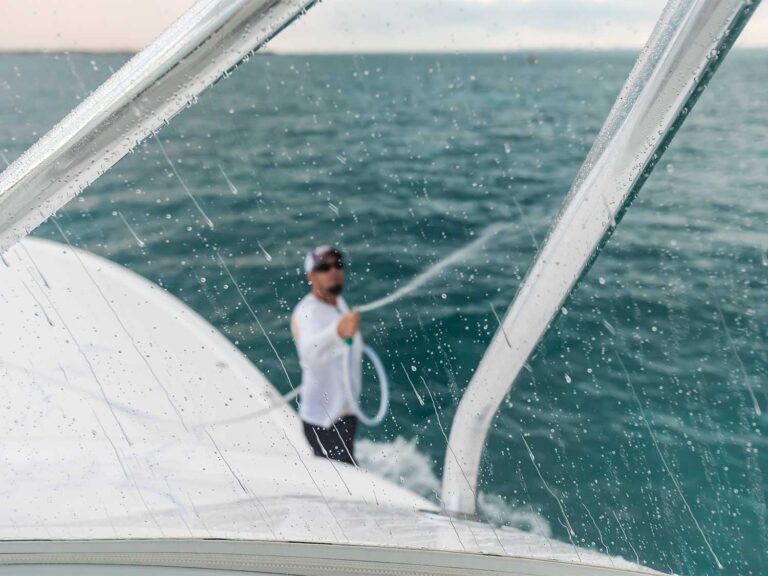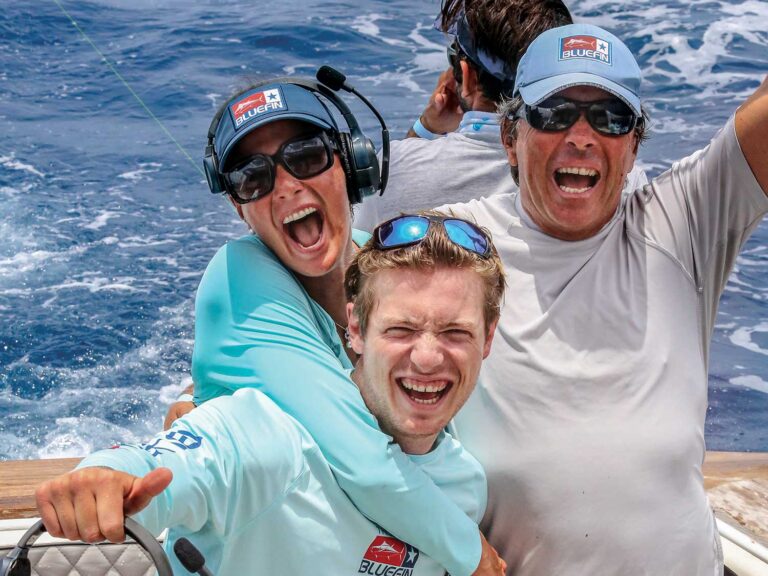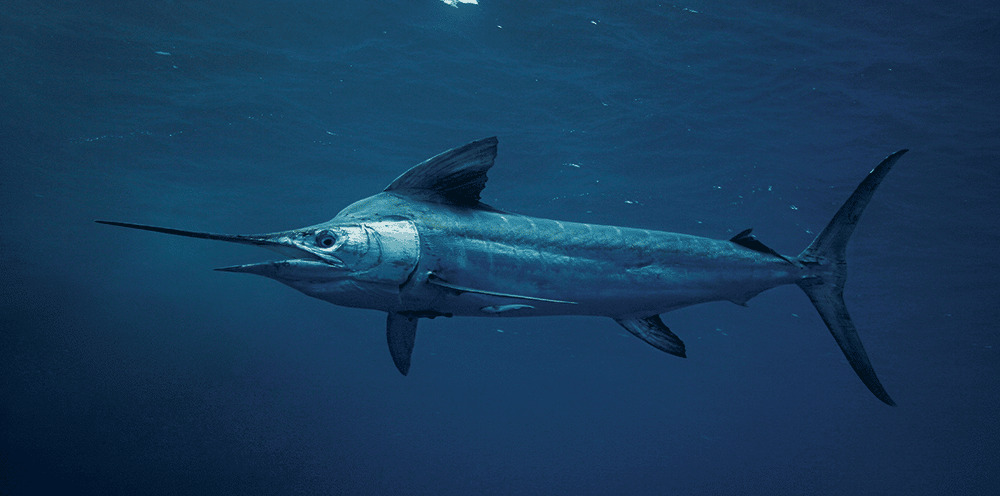
Whether it’s the massive Pacific blue marlin in Kona, giant Atlantic blue marlin in the Azores or the plentiful white marlin fishery in North Carolina, each and every location comes with its own fishing style and methods unique to the fishery. Over the last decade, I’ve been lucky enough to travel around the globe and fish some of the best marlin destinations around, learning the secrets of a number of the world’s best captains along the way. I get to apply this knowledge in my own backyard of New Zealand during our outstanding striped marlin fishery that occurs every year from December through May.
New Zealand might not hold the huge numbers of fish that many locations around the globe enjoy, but what it lacks in numbers, it makes up for in size. The huge striped marlin caught here in New Zealand provide a very unique fishery. Each year, 300-pounders come to the boat with surprising regularity. With the occasional fish topping the 400-mark, New Zealand is the place for those in search of a trophy striped marlin.
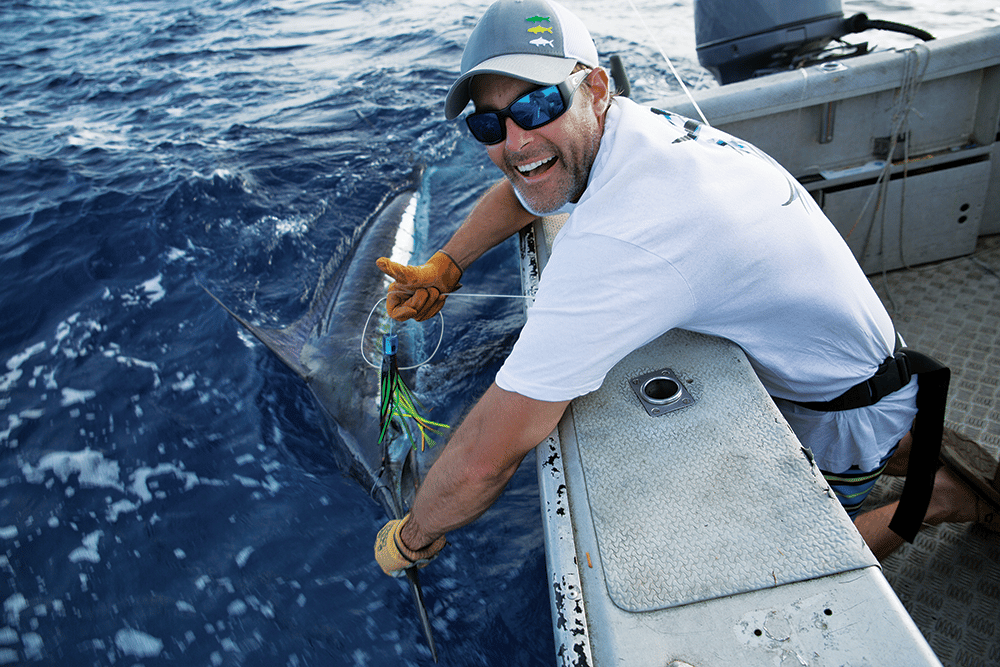
Made for Fishing
What also makes the fishery unique is the geographical nature of the country. New Zealand is a very long, narrow landmass, especially in the area of the North Island, where the majority of the fishing takes place. There’s usually a lee side, so anglers can fish both coasts of the country. This is especially important here because the weather can be unpredictable and the fishing can be fickle. With all these rapidly changing factors, most of the anglers fish from small trailer boats. This allows them to fish one side of the country on one day, the other the next. It’s also a great way to see the contrasting beauty of New Zealand’s coastline while putting yourself in the right place to capture a trophy striped marlin.
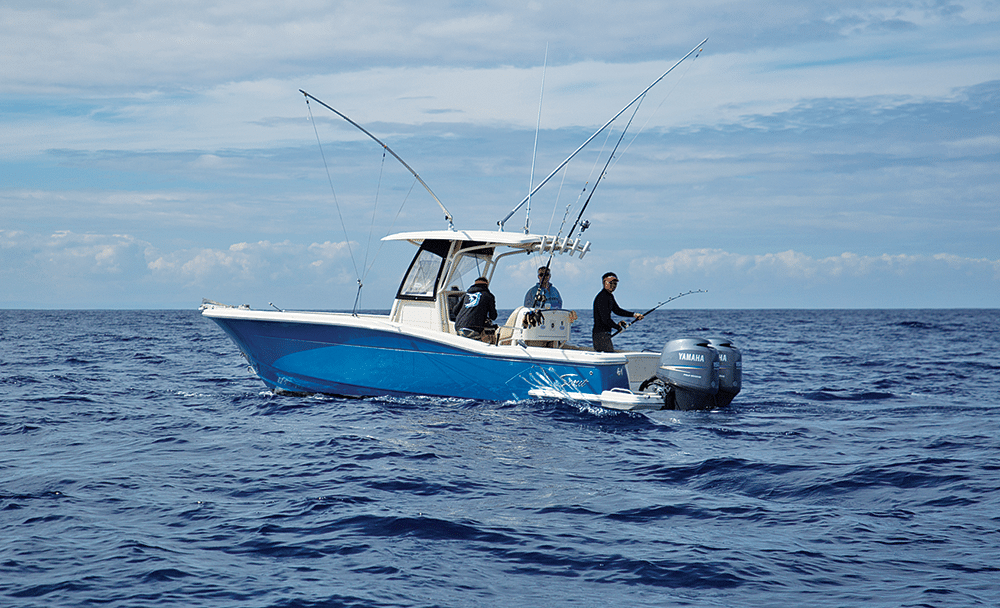
Down Under Fishing Techniques
Striped marlin fishermen need to cover a large amount of ground to find fish on most days, so many of them troll lures. However, when stripeys show up in large numbers, using live baits can prove deadly.
With the finicky feeding nature of a striped marlin, it can make catching them on lures extremely difficult at times. Some crews prefer to use the bait-and-switch method. It works well here, but with the height disadvantages that come from most of the crews fishing from trailer boats with no bridge or tower, it can prove difficult for all involved to have a clear look to make a successful switch.
We all have to deal with the shortcomings associated with fishing from small boats, so I decided to make it my mission to come up with a way to improve our hookup ratios while pulling lures. This meant taking a lot from the time I spent fishing with some of the top crews in North Carolina chasing white marlin on trolled baits and adapting it to successfully troll small lures on 30-pound tackle for striped marlin in New Zealand. The ideal lure system would be as simple as possible, yet improve our conversion rate and still allow us to cover a lot of ground.
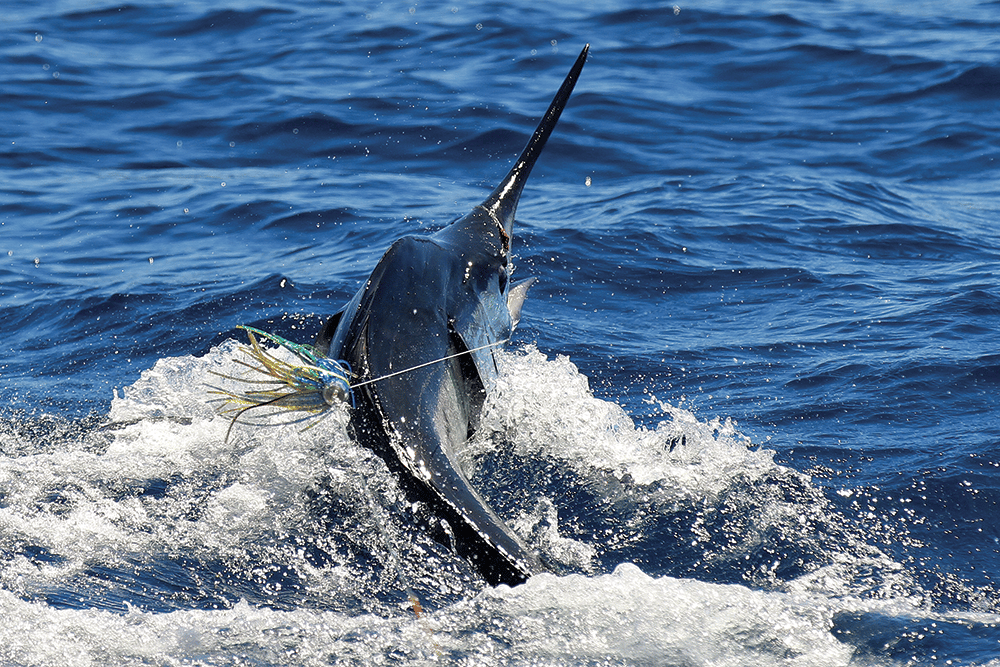
Lures and Rigging
For our striped marlin, I find that any small lure from 7 to 10 inches long works perfectly. Basically, I’m trying to match the same size profile as the ballyhoo baits we used to troll for white marlin in North Carolina. The beauty of these small lures is that we can run them on light leaders with small, super sharp, thin hook-sets. What I’ve found running these smaller lures is that the fish seem to eat the lure a lot more cleanly. I think this is due to their smaller size and the lack of bubble trail from the thin leader. To me, this is very much the same as fishing for bait, where a heavy leader can affect the fish’s ability to eat your offering.
Consequently, I rig the majority of my striped marlin lures on a 9-foot, 170-pound section of fluorocarbon leader attached to an 18-foot, 200-pound standard mono wind-on. The wind-on leader is a very important factor in dealing with these fish when fishing from our small trailer boats.
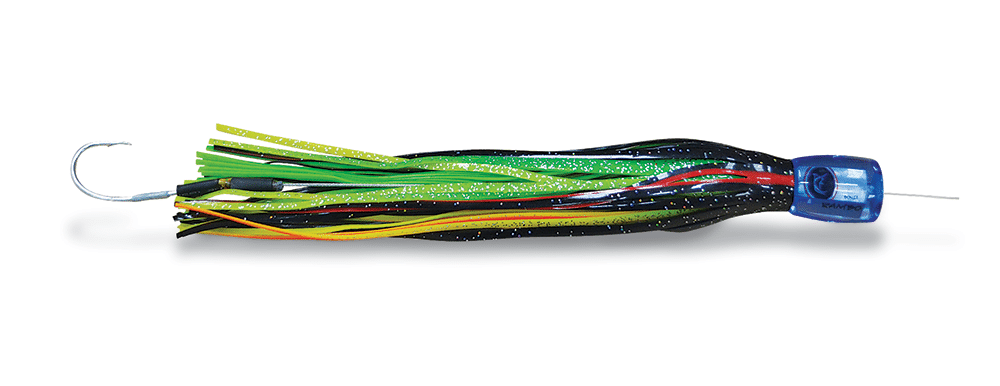
The hook-sets, however, are the key in achieving a good strike-to-catch ratio.
The secret involves using a very thin, chemically sharpened hook. I am not too fussy about the style of hook rig I use in the lures as long as they are swimming nicely. Generally, I tend to use a 180-degree double-hook rig in any angled face lure, and I use a single swinging rig in any other shaped lure.
One thing I have found while using these chemically sharpened hooks is that they break down when they are trolled through the water. It is crucial that you use a sacrificial zinc anode on the hook. This will prevent the hook points from falling off during a day of trolling. No matter how thin the hooks are, they are just like any other style of hook — they won’t hook fish if they aren’t sharp.
The small hooks represent the weakest link in the system, strength wise, but I am trying to get the best shot at hooking the fish, so I’m willing to take the chance of straightening one out on the leader.
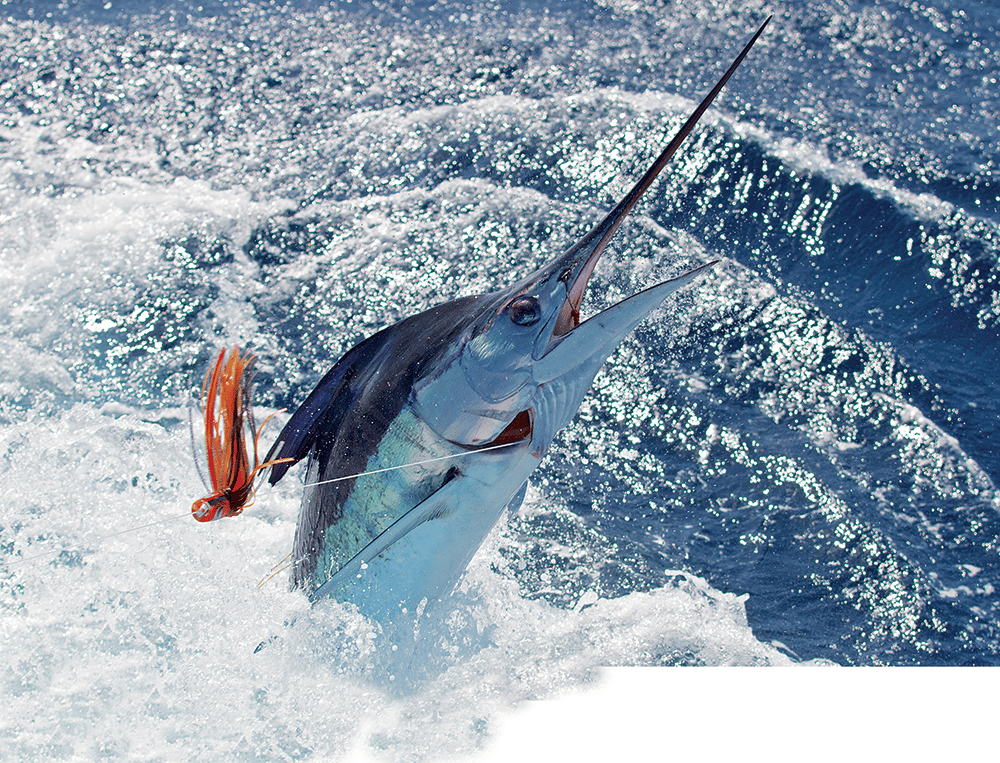
Teasers
With the majority of the fishing done from trailer boats, pulling teasers also plays a crucial role in the ability to raise fish consistently. One recent teaser invention that certainly made a big difference here is the dredge teaser. After seeing the effectiveness of dredges on white marlin, I tried them here, and they have proven just as deadly on our striped marlin.
A basic strip model or artificial squid dredge seems to be the most suited to our fishing here because they are lightweight, easy to deploy and do not need any bait to use. Finding suitable bait can be difficult here — none of the commercially available bait can hold up to long hours of trolling.
The other effective teaser I use consists of a daisy chain of large lures. I get a good reaction from the combination of the pulling the dredge down deep and the daisy chain splashing on the surface.
These teasers also allow me to run lures that are just too big to run on conventional tackle, and they add great contrast to the smaller lures I am running with hooks in them. This can create some spectacular switch bites on the small lures when the fish come in hot on the daisy chain teasers that run in front of my two closest lures.
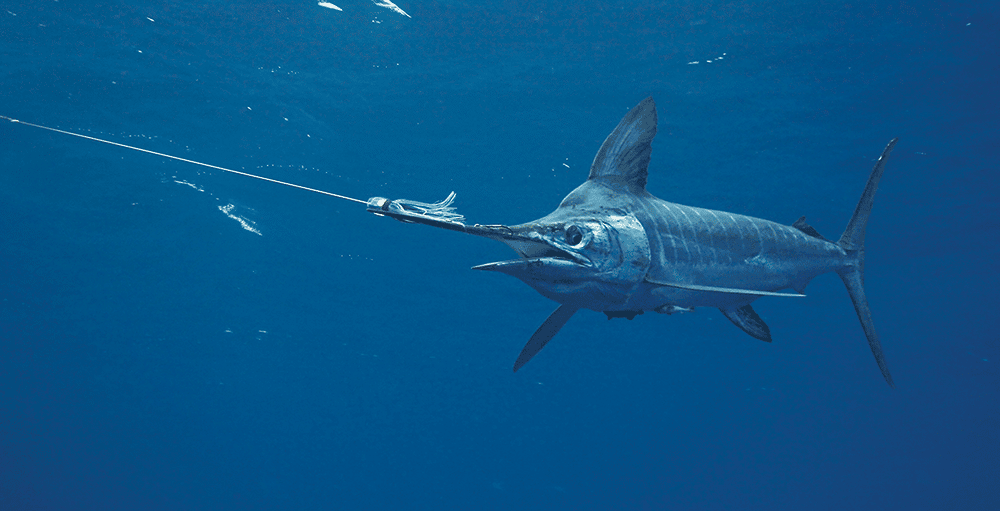
Hooked Up
Once I’ve been lucky enough to find a fish and hook it, I immediately put the boat into a turn on the same side that the fish is on. This allows me to keep fishing for a little longer with the baits on the outside of the turn, which gives me a better chance of hooking multiple fish and lets me chase the fish at the same time.
One of the advantages that I’ve found in going down to lighter line classes is that fish behavior tends to change. I found that with less drag on the fish they tend not to dive deep as quickly in the fight, staying up on the surface and allowing you to catch them very quickly.
I first saw this technique work extremely well when I was running Happy Hooker in Cape Verde with mate Stephen Hall running the deck. His ability to coach anglers and determine their drag management made all the difference between a long, deep, drawn-out fight or a short, spectacular surface fight.
These same techniques work on our striped marlin. Not only does the lighter drag on the fish help keep the fish on the surface, it reduces the amount of pulled hooks. The other great factor is that it allows the angler to increase the drag pressure if the fish decides to go down.
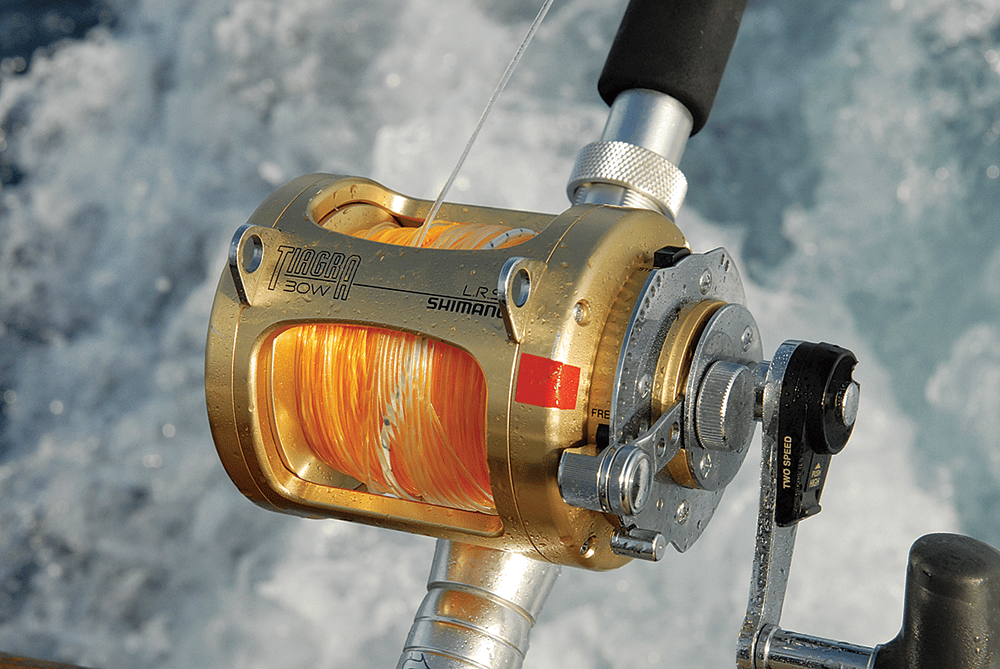
Quite often, this change of drag pressure is all that you need to bring the fish back to the surface again. You can then back off the drag again and repeat the process until you capture the fish.
Fighting a fish while going backward in a small trailer boat isn’t very efficient and can be quite dangerous. Therefore, the majority of the fight occurs while the boat is moving forward. This is where the use of a wind-on leader becomes crucial. With a wind-on, you can easily maneuver the boat right up alongside the fish without applying any more pressure. Quite frequently, the fish will just tail alongside the boat and not even worry you’re there, letting you easily tag it.
The results from scaling everything down have definitely improved my odds with lure fishing. Not only do I seem to be raising more fish with the smaller lures and this dredge/teaser style of fishing, my catch ratio has increased significantly. I still have my average days, but you get that with bait-fishing, too.
I don’t think we will ever find a miracle solution to the frustration of lure fishing for striped marlin because we can’t control that one variable: the way the fish bites. But I think this simple system is on the right track to make our efforts succeed on a much more consistent basis. “Lure fishing,” as my good friend and mentor, the late Capt. Mike Rand from Kona, used to tell me, “is a simple thing we make complicated, only to realize it is simple.” I would say that truer words have never been spoken!
